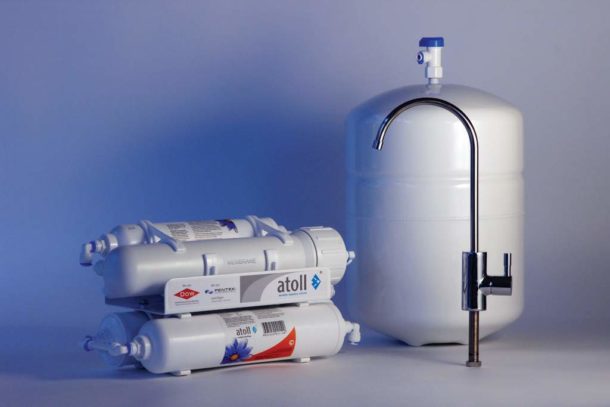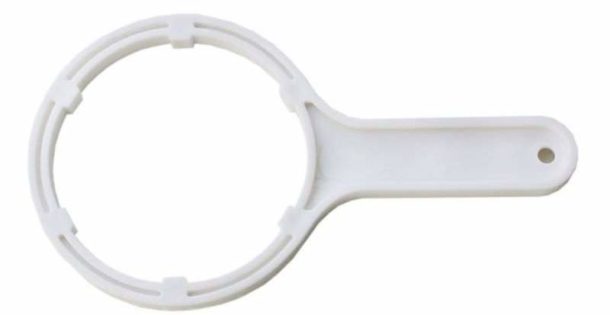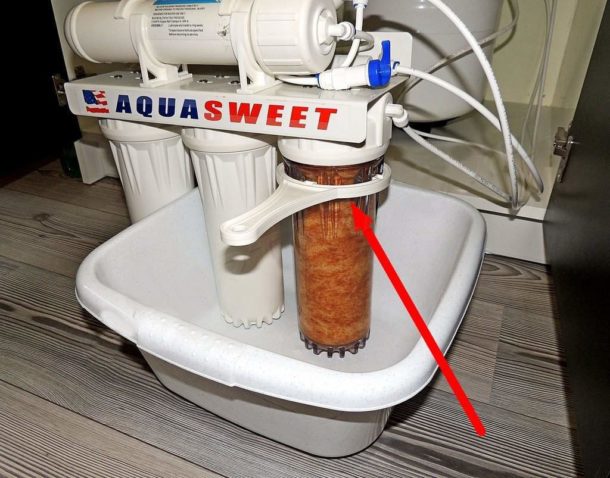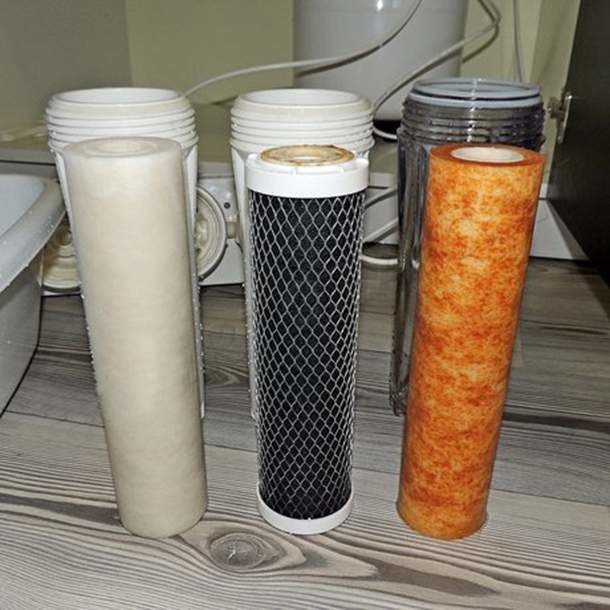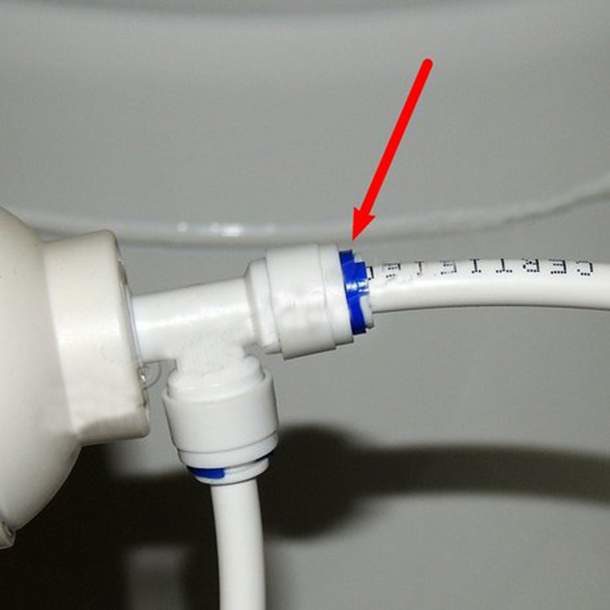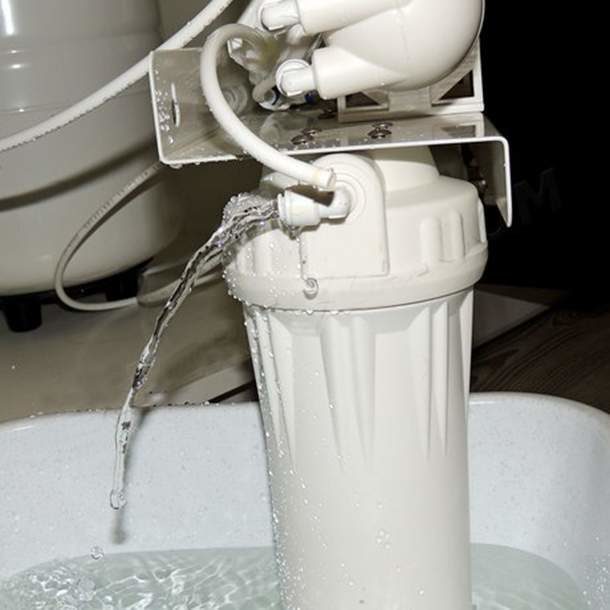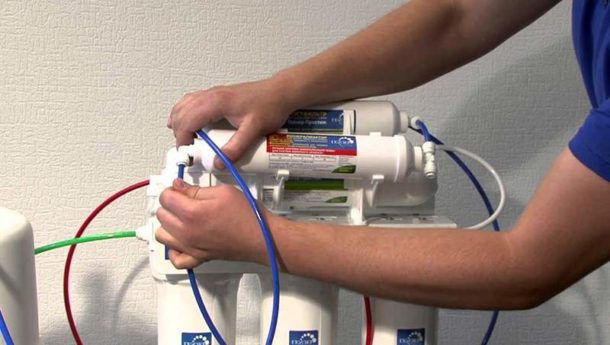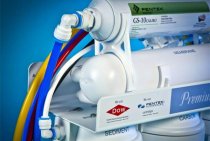According to the degree of water purification, a system using the principle of reverse osmosis is considered the best. Despite the considerable cost, it can often be found in modern apartments. Like other filter devices, it requires periodic replacement of cleaning elements. Many owners call the master, not suspecting that the replacement of cartridges in the reverse osmosis filter can be done on their own, without spending a lot of time and effort.
What will be required for replacement?
The list of necessary devices is small:
- A set of new cartridges suitable for the cleaning system model installed in the apartment.
- Plastic wrenches for unscrewing the filter flasks included in the device kit. You can do without them, but then you need to replace them together.
- Basin and rag - to prevent the formation of puddles and leaks due to spilled water from the system.
- Silicone grease - for processing seals.
The new filter set must be installed in the same way as the old one. In order not to confuse anything, it is better to first fix the position of each part on the mobile phone camera before removing it. This will greatly simplify the replacement of replaceable cartridges: there will be no need to painfully remember how this or that part was installed.
Disassembling and cleaning the device
The procedure is as follows:
- A faucet is usually installed at the point where the filter is connected to the water supply. It must be shut off to stop the water supply to the device. If there is no valve, then you will have to completely shut off the flow of cold water into the apartment.
- So that the pressure in the system does not interfere with the unscrewing of the filter cassettes, water is drained from it: the tap is opened and left in this position. The liquid can completely disappear in about five minutes.
- To prevent leakage, we substitute a basin under the filter, if it is too large - under the spinning flask. In extreme cases, a rag is also suitable, which will need to quickly collect the water that has spilled out of the flask.
- Unscrew the flask using the supplied plastic key. If the tool is missing for some reason, we find an assistant. While he holds the body of the cleaning system with both hands, the flask is unscrewed. Also with both hands.
- This operation will have to be repeated three times to remove all replacement filters. And it is better to photograph them immediately after dismantling, so as not to forget the order of their installation.
- Empty flasks are washed with warm water and laundry soap. This will help remove sand and dirt from both the inside and outside. Contamination from the bushings and sealing gum is removed with paper towels.
It is important not to lose the sealing rubber bands: they can easily come off during dismantling. The gaskets must be put in place (otherwise the filter will leak) and treated with silicone grease - during subsequent maintenance, this will make it easier to unscrew the bulb.
Installing new cartridges and assembly
After preparing the flasks, which must be washed and dried, you can proceed to install new filter elements.
- Purchased reverse osmosis cartridges are unpacked and placed in flasks. Using previously taken photographs, they are screwed back in the same order in which they were located earlier.
The connections are tightened tightly, but without excessive force: plastic threads are quite easy to strip.
- It remains to change the post-filter, which serves to improve the taste and smell of water. Not all models of cleaning systems have such a filter, but it does not hurt to know how to replace it. We photograph its initial position so that the direction of the arrow on the filter housing is clearly visible. After that, it can be safely removed from the holders.
- We are preparing a basin: it is necessary to disconnect all the tubes suitable for the post-filter, and water will inevitably pour out of them.
- On the tubes there are special clamps, usually blue. They are picked up with nails or an improvised tool and pulled out. It is worth pressing the ring held by the latch, and the hose will be released and easily pulled out.
- After disconnecting all the tubes, unscrew the plastic tee.
- We take out a new filter from the box and remove the plugs on both sides of it.
- Guided by the previously taken picture, put it in place, after which we connect the tee.
- We connect the tubes: with a little effort we insert them all the way, then we pull off the plastic ring and place a blue lock in the gap formed. It will securely hold the handset in place.
A pre-taken photo of their location before removing the cartridge will help not to confuse the order of connecting the hoses.
- This procedure is repeated to attach the tubes on the other side. After that, the post-filter can be installed in its place and the holders snap into place.
Flushing the cartridges
The operating instructions indicate a rather long service life of the main part of the reverse osmosis purification system - the membrane. The frequency of its replacement is from 1.5 to 4 years. Therefore, it is not touched during the usual renewal of filters, but in order to extend its uninterrupted operation, it is necessary to drain some water so that small particles from new filters do not clog the membrane holes. To do this, do the following:
- We remove the tube going from the first three flasks with filters to the membrane. It is equipped with the same retainer as the post-filter and is released in the same way. Substituting the basin on it, turn on the water supply and drain 15-20 liters. During this time, the cartridges will be washed and all impurities will go into the basin, bypassing the membrane.
- After flushing, put the tube in place, fix it. The entire cleaning system can be hoisted back under the sink.
The video at the end of the article will help you understand the process more clearly.
Pros and cons of the reverse osmosis filtration system, as well as myths and interesting facts about it - here.
The frequency of filter replacement for different models of cleaning systems
Each manufacturer indicates the service life of the elements of their filtration system. In case this data is lost, here are recommendations for the most common models.
For the Aquaphor OSMO-50 reverse osmosis system, the EFG63-250-20C and EFG63-250-5C modules will need to be replaced after 3 months, B510-03 - after 6 months. The carbon filter will last a year, the membrane replacement is provided in 1.5–2 years.
In the Barrier K Osmos filter, cartridges are changed every six months, the membrane is designed for 3–4 years of operation. The same terms for the replacement of working elements are provided for the Geyser Prestige 2 reverse osmosis system.
Thus, it can be seen that the process of replacing cleaning elements in a reverse osmosis system is not at all complicated. By doing the work carefully and accurately, referring to the previously taken photographs of the position of the elements before the replacement, you can cope with this task yourself, spending about an hour of free time.
